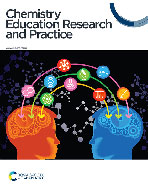The integration of a community service learning water project in a post-secondary chemistry lab
Abstract
Community Service Learning (CSL) is an experiential learning approach that integrates community service into student projects and provides diverse learning opportunities to reduce interdisciplinary barriers. A semester-long chemistry curriculum with an integrated CSL intervention was implemented in a Canadian university to analyze the potential for engagement and positive attitudes toward chemistry as a meaningful undertaking for 14 post-secondary students in the laboratory as well as for their 400 K-12 student partners in the community. Traditionally, introductory science experiments typically involve repeating a cookbook recipe from a lab book, but this CSL project allowed the post-secondary and K-12 students to work collaboratively to determine the physical and chemical properties and total dissolved solids in the water fountains from the K-12 students' schools. Post-instructional surveys were completed by all learners and were analyzed using a mixed methodological approach with both quantitative and qualitative methods. The expected audience that may be interested in this study are those involved in teaching chemistry in higher education and at the K-12 level as well as those interested in service learning, community and civic engagement, experiential learning, and development of transferable skills in chemistry. The results demonstrate that both groups of students report favorable engagement and attitudes towards learning chemistry and higher self-confidence levels on performing lab skills after the activity. Furthermore, both groups of students expressed interest in exploring future projects, which is indicative of the positive impact of CSL and the mutual benefits of the partnership.


 Please wait while we load your content...
Please wait while we load your content...